In Texas, can you be arrested for picking bluebonnets on roadsides? Here’s what to know
- Oops!Something went wrong.Please try again later.
Bluebonnet season is in full bloom across Texas.
In March, experts from the Lady Bird Johnson Wildflower Center in Austin declared this year’s bloom to be super because of how last year’s drought conditions may have killed off much of the flowers’ rivals and how a generously wet winter may have helped the plants to propagate.
“On a scale from one to 10, this year looks like it could be an eight, for bluebonnets in particular, if not even better,” said Andrea DeLong-Amaya, the center’s director of horticulture. “This fall and winter we’ve enjoyed adequate rainfall that’s been well-spaced, which is really key to wildflower development.”
Long random patches of red, yellow and especially purple blooms line many Fort Worth roads today — a beautiful basket of spring that draws visitors to Texas. People of the Lone Star State are fiercely proud of their state flower — officially named by the legislature in 1901.
But is it against the law to pick bluebonnet blooms?
⚡ More trending stories:
→ There’s no ‘better place’ to see April 8 total solar eclipse than in this tiny Texas town.
→In Texas, set your thermostat at 80 when it's 100 degrees, expert says.
→Groceries at this national chain are the cheapest, study finds.
A cheeky conversation erupted on an Instagram account owned by an Austin singer. Her post shows her clutching a bunch of bluebonnet blooms. After much gushing about how talented the singer is, a commenter asks if the flowers were indeed bluebonnets.
This response followed shortly: “My traumatized Texas a** (thinking I’d go to jail if I picked Bluebonnets as a child) I was startled by this photo.”
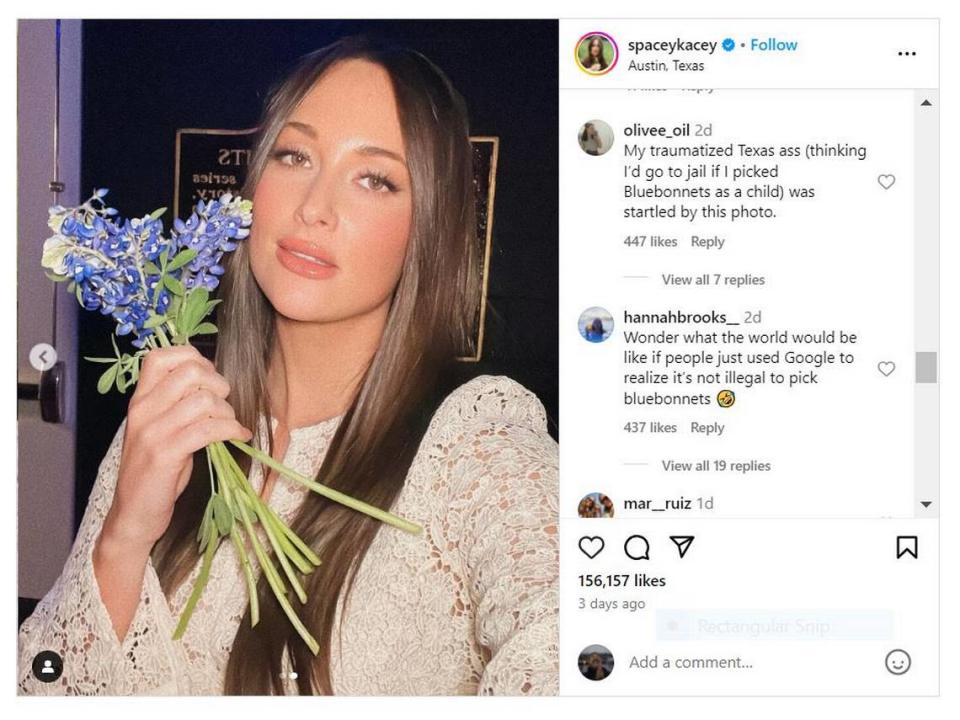
Is it legal to pick bluebonnets?
Contrary to popular rumor, there is no law that prohibits picking bluebonnets in Texas, according to the Texas Commission on Environmental Quality “Take Care of Texas” campaign.
You can also take photos with the bluebonnets as long as you don’t damage the flowers.
TxDOT discourages picture-taking that damages the flowers because if too many are trampled, they will die and not go to seed.
A century of conservation for a legacy of purple blooms
Fears of the flowers’ extinction is not new.
More than century ago, a San Antonio civic activist named Sallie Ward Beretta led the charge to educate the public on the dire condition she found her lovely blooms to be in. Beretta launched her conservation efforts at a women’s club function, strategically placing paper blooms on tables as a challenge: Do nothing and paper flowers are all we’ll be left with.
The women responded with a flourish, gathering seeds from across the city and sending free packets out to Girl Scout troops across the state. Some of the seed packets even found their way to Alaska, New York and even points abroad.
Beretta’s conservation work earned her the moniker: “Bluebonnet Lady of Texas.”
When do Texas bluebonnets bloom?
The typical bluebonnet season is from March through May, but more wildflowers can be seen at different times of the year depending on the region.
The TxDOT hardiness zones are:
Region 6: Early April – Mid August
Region 7: Late March – Mid September
Region 8: Mid March – Late October
Region 9: Early March – Early November
Tarrant County is situated in both region 7 and 8, so other native wildflower species can be found into the fall once bluebonnets are out of bloom.
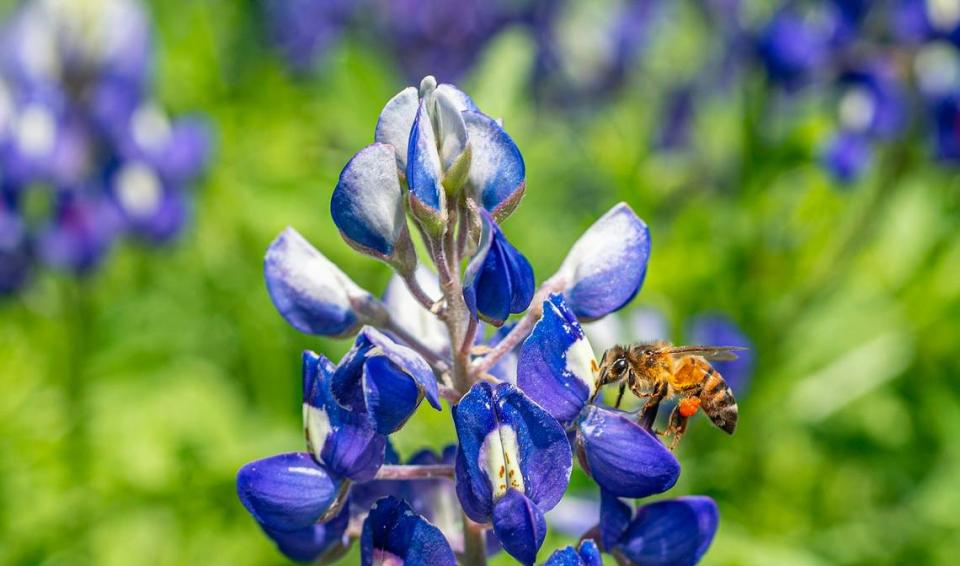
Here’s where to find bluebonnet blooms in Texas
In North Texas, finding bluebonnets is as easy as driving most highways or a detour into nearby rural farm towns. Really. It’s that simple. But if you’re looking for an awe-inspiring excursion with the purple blooms as your star, here are seven places that need to be on your must-visit itinerary. Do not leave your camera at home. It will be a shutterbug’s paradise.
1. Kingsland
Each spring, this town nestled near Llano explodes in bluebonnet blooms that can last for two months. Follow a trail of the flowers from Llano to Kingsland on Texas 29, then south on Ranch Road 1431. This peaceful town is not typically flooded with tourists, making it an ideal spot to view the pretty purple blooms.
2. Marble Falls
This picturesque town on the Colorado River is where you will find President Lyndon B. Johnson’s ranch. Marble Falls takes pride in this, extolling the fact that when Lady Bird Johnson, wife of the 36th president of the United States, planted bluebonnet seeds across America, they love to point out that they got a little more love in the process. Its proximity to Kingsland and Burnet makes for a convenient trio of stops.
3. Burnet
Recognized as the “Bluebonnet Capital of Texas,” Burnet ought to be on the list for those scavenging for the best views of the wildflowers. Its annual Bluebonnet Festival, held from April 12-14, is a major attraction. Thousands converge on this Hill Country hamlet on the intersection of Texas 29 and U.S. 281 each spring, mostly because of the bluebonnets.
4. Brenham
This town in Washington County is located in the heart of bluebonnet country. The town watches for the first signs of the purple blooms, anticipating a spring full of flowers. Brenham is located halfway between Houston and Austin, and is known for its picturesque countryside and charming historic downtown.
5. Ennis
Only an hour drive southeast from Fort Worth, Ennis is a convenient destination for folks from the Metroplex looking to view bluebonnets. The town is home to the Ennis Bluebonnet Trail and Festival. The Ennis Garden Club meticulously tracks flower growth, making it a reliable source of bluebonnet sightings.
6. Lady Bird Johnson Wildflower Center, Austin
This wildflower park is home to nearly 900 species of native Texas wildflowers and plants. The Center also offers educational programs for adults and children.
7. Big Bend National Park
Though not on the traditional Texas bluebonnet trail, Big Bend National Park offers a unique bluebonnet experience. The tallest of the bluebonnet species is named after the area: Big Bend bluebonnet, Lupinus havardii. It grows thickly along the park’s paved roads. We may see a superbloom this year, which could paint the hillsides inside the park blue.
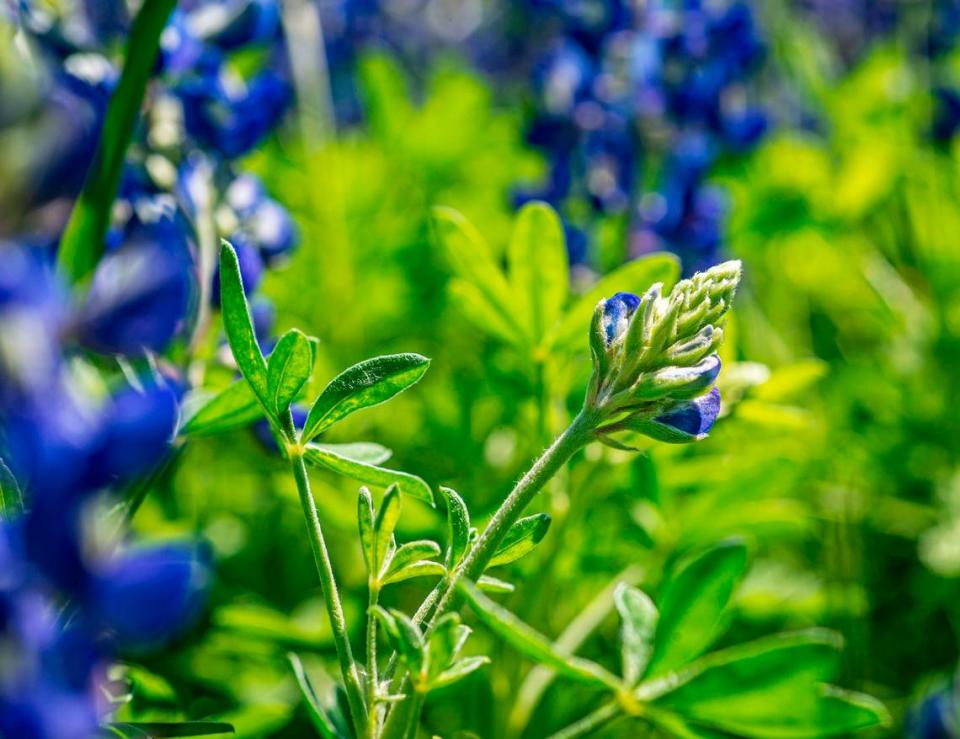
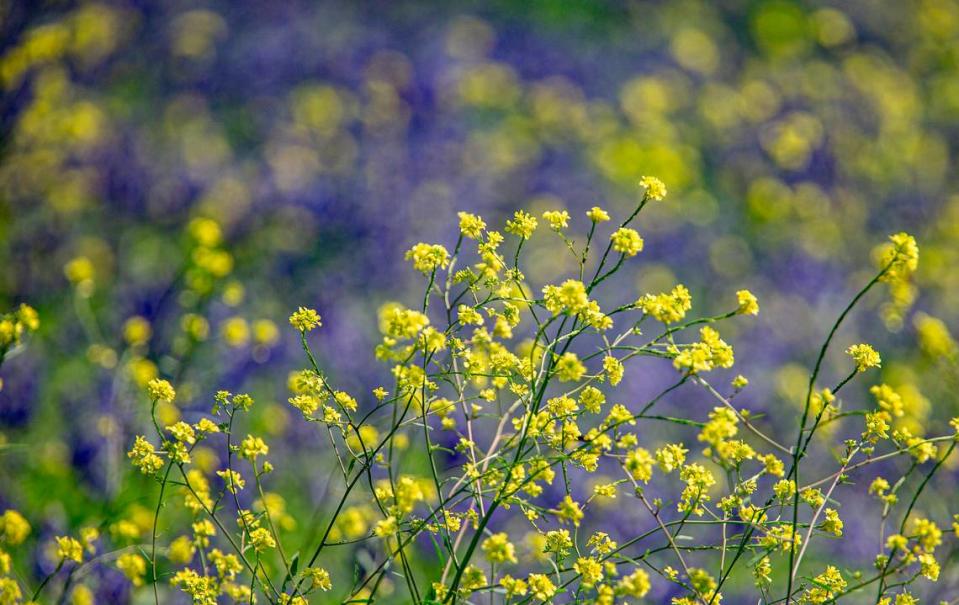
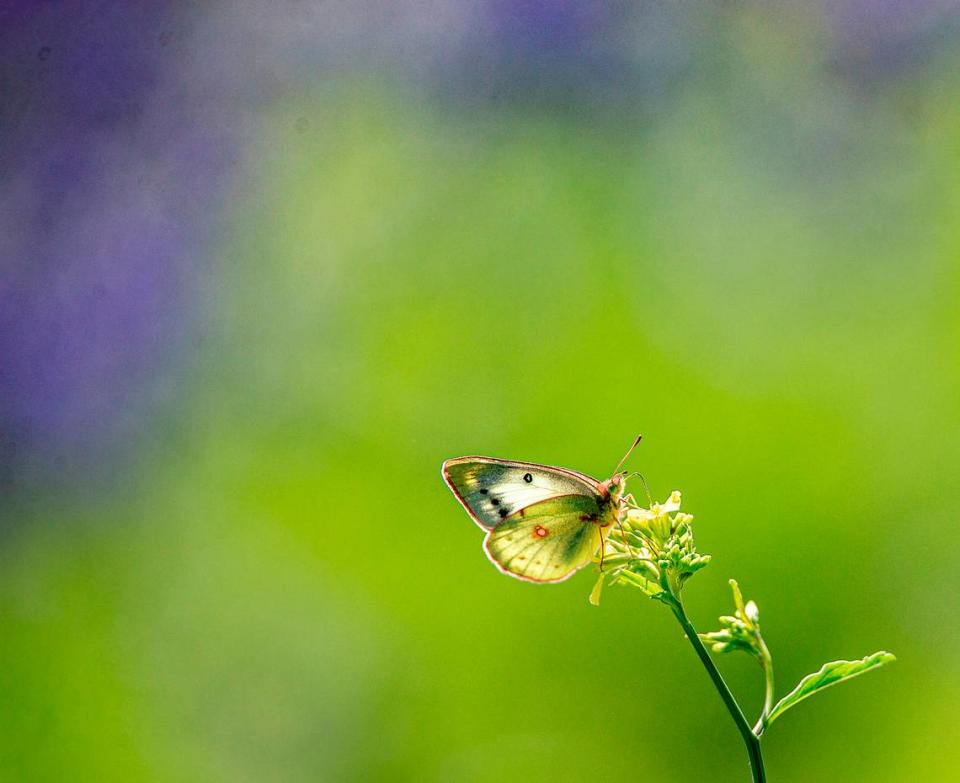
So, what are bluebonnets and where did they come from?
The purple blooms are the pride of Texas, adopted by the 27th Texas Legislature as the state flower on March 7, 1901. Bluebonnets get their name from the flower’s individual bloom’s resemblance to the sunbonnets women wore to guard against the grueling Texas sun.
“The Bluebonnet is to Texas what the shamrock is to Ireland, the cherry blossom to Japan, the lily to France, the rose to England and the tulip to Holland,” historian Jack Maguire wrote. “It’s not only the state flower but also a kind of floral trademark almost as well known to outsiders as cowboy boots and the Stetson hat.”
Local lore suggests the lupines were brought over to the New World by Spanish priests because observers noticed how the priests would care for the blooms around mission houses. But American Indian mythology contradicts that telling, planting the beautiful bluebonnets front-and-center in the telling of their stories and referring to the blooms as “a gift from the Great Spirit,” according to the Texas State Historical Association.
Bluebonnets come from a few species of lupines that include the Texas bluebonnet, Lupinus texensis, sandyland bluebonnet, Lupinus subcarnosus, and the Big Bend bluebonnet, Lupinus havardii. The three species along with the rarer Lupinus concinnus and Lupinus plattensis comprise the state flower of Texas.
The blooms thrive on poor, rocky soil under a full sun, which is why they thrive in Texas on pastures that have been heavily grazed, experienced recent fires and land that have been mown, such as roadsides.

